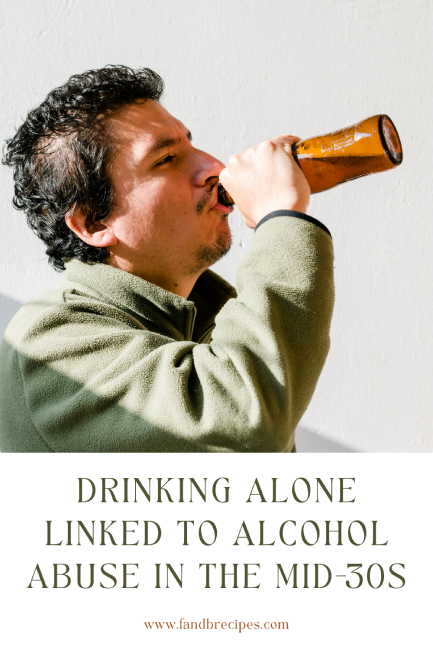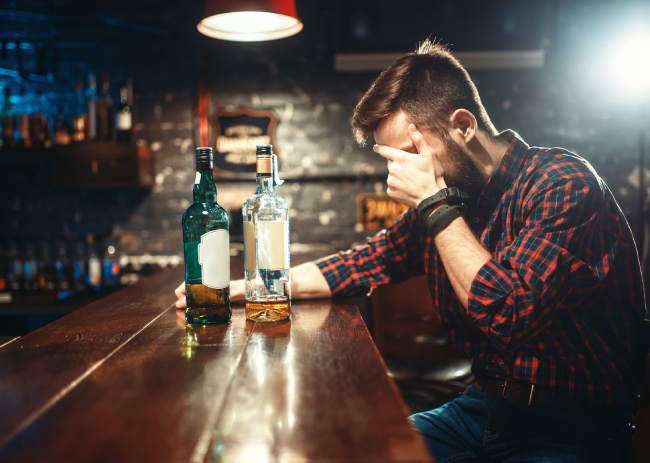Drinking Alone Linked to Alcohol Abuse in The Mid-30s
Alcohol is one of the most popular substances in the world, and the majority of Americans have reported trying it at least once. Many people enjoy it as a simple way to wind down at the end of the day or to destress. However, a growing number of people are also developing alcohol abuse problems. A new study shows that early drinking habits can have consequences later in life. Because of these, more young people across the US are looking at alcohol addiction treatment help in 2023.
Alcohol Use in America
According to the National Institute on Alcohol Abuse and Alcoholism (NIAAA), over 85% of Americans over the age of eighteen have tried alcohol at least once in their lives. Trying alcohol once is unlikely to lead to any health or addiction problems, but binge drinking is much more dangerous. Binge drinking is defined for men as drinking five or more drinks in roughly a two-hour period. For women, binge drinking is usually defined as having four drinks in the same period.
Binge drinking is much more likely to lead to injury, risk-taking behaviour, and crime. The NIAAA figures from 2021 show that nearly 3.2 million individuals in the 12-22 years age group in the USA had engaged in binge drinking at least once in the past month. With a quarter of the population getting potentially recklessly intoxicated, the chances of some of them developing alcohol abuse disorder (AUD) become higher. Although the law states you must be twenty-one years or older to drink, almost 40% of people below this age reported drinking alcohol. Young people are also at great risk of binge drinking, with 11.1% of young people between 12 and 20 years old reporting binge drinking within the past month. A further 2.2% of young people reported binge drinking more than five times within the past month. Professional alcoholism treatment at united recovery is available for those experiencing binge drinking problems.
Alcohol Use Disorder in America
All this has led to large numbers of Americans suffering from alcohol use disorder (AUD). Alcohol use disorder is a medical condition defined by the Diagnostic and Statistical Manual of Mental Disorders 5 (DSM 5). It is described as a compulsion to drink, regardless of the negative impacts it has on their life. The loss of control over the drinking, and the presence of withdrawal symptoms when stopping drinking also go towards an AUD diagnosis.
The NIAAA estimates that over 14 million Americans currently suffer from AUD. Only 7.2% of those people received any treatment for it in the past year. The impact on families and communities around the country can be devastating, and AUD often occurs alongside other substance abuse issues or addictions such as gambling. Alcohol abuse is a complex problem, and each person has their own individual influencing factors. Without treatment, AUD can lead to incarceration, injury, or death.
Each year, approximately 95,000 people in America die from alcohol abuse or alcohol-related problems. It is the third greatest preventable cause of death. The only substance which kills more people is tobacco, while a poor diet and a lack of exercise also result in more early deaths than alcohol. A combination of these three, plus any other addiction issues represents a serious risk for anyone.
What Does New Research Suggest?
A new study published in the journal Drug and Alcohol Dependence sheds new light on the dangers of unhealthy drinking behaviours when young. The study was led by associate professor of psychology Kasey Creswell (Carnegie Mellon University) and a team from the University of Michigan. The longitudinal study was conducted over seventeen years and followed a group of 4,500 teens in their mid-30s.
The study came up with several important findings, not least that the coronavirus epidemic led to an increase in people of all ages drinking alone, as well as an overall increase in alcohol consumption. About 40% of the young people who took part in the study reported drinking alone, as well as roughly 25% of teenagers.
The overall increase in stress levels and poor mental health as a result of the global pandemic, which is estimated to have killed over one million Americans, caused more people to drink in order to relieve stress. The study found that the main reason young people were drinking alone was to help them cope with all the negative emotions they were confronted with. This contrasts with the prevailing view that alcohol was primarily a party substance used to facilitate social interactions.
The overall conclusion of the study was that drinking alone as an adolescent increases one’s chances of displaying the symptoms of AUD at the age of 35 by 35%. Drinking alone as a young adult increased the chances of AUD at 35 by 60%. This shows that drinking alone as a teenager or young adult poses a great risk for the future.
The risk of developing AUD as a result of adolescent solitary drinking is also drastically greater for females than for males, according to the study. The chance of AUD symptoms at age 35 was 86% higher for teenage girls who drank alone, while it was only 8% higher for teenage boys. The exact reasons for this are not completely understood; however, they do tie in with the results of some earlier studies.
One study published in the Journal of the American Medical Association (JAMA) showed a 41% increase in the number of days women drink heavily since the onset of the COVID-19 pandemic.
The authors of the study suggested further research is needed to determine when exactly the symptoms of AUD began to show. It could be that the symptoms showed even earlier, but that the study did not check in with them at that time.
Regardless of these details, it is important that anyone suffering from alcohol use disorder be able to access treatment. A variety of treatments exist to help people manage their addiction. This includes cognitive-behavioural therapy (CBT), managed detoxification, and even the use of medication. The drug disulfiram doesn’t reduce cravings but acts as a deterrent by making users feel sick if they drink alcohol while taking it. With so many options available, speaking to a doctor or addiction specialist can be the first step on the road to recovery.

Jason Shiers is a Certified Psychotherapist and blogger.



